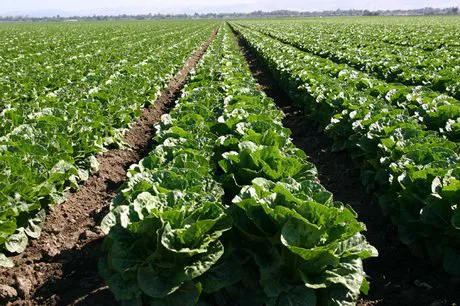
The influence of six irrigation regimes on respiration rate, tissue browning and microbial growth was evaluated in 6 different harvests in 3 consecutive years. The amount of water supplied to the crop was calculated taking into account the irrigation water and rainfall.
On the basis of the standard irrigation regime:
- -35% RIS (<221 mm)
- -15% RIS (221-265 mm)
- RIS (266-320 mm)
- +15% RIS (321-370 mm)
- +35% RIS (371-430 mm)
- +75% RIS (>430 mm)
These differences were observed also in the fresh-cut lettuce after processing (day 0). However, after 10 days of storage, psychrotrophic aerobic bacteria increased by around 3 log units regardless of the irrigation regimes tested.
Despite the high number of Pseudomonas bacteria in fresh-cut lettuce, 6.2 log cfu/g in samples from lettuce grown in water deficit conditions (-35% SIR) and 7.8 log cfu/g in samples from lettuce grown in water excess conditions (+75% SIR), no relation with the quality loss was observed at the end of storage. Also the visual quality of fresh-cut lettuce was not affected by the irrigation regimes, this could be due to the similar headspace gas composition in all samples.
The tissue browning of cut surface was reduced in the samples obtained from less irrigated lettuce despite the phenolic accumulation. The PPO (Polyphenol oxidase) activity increased in the samples obtained from lettuce grown in water excess conditions, while the respiration rate was higher in the samples obtained from lettuce grown in extreme conditions of both water deficit and water excess.
The authors concluded highlighting the importance of a proper irrigation management to guarantee the environmental sustainability of the system and the quality of both lettuce head at harvest and fresh-cut lettuce after processing. Finally, it is fundamental to optimize the irrigation practices for each lettuce type because the differences occur according to the lettuce type.
Source: Luna M.C., Tudela J.A., Martinez-Sànchez A., Allende A., Gil M.I., ‘Optimizing water management to control respiration rate and reduce browning and microbial load of fresh-cut romaine lettuce’, 2013, Postharvest Biology and Technology, Issue N. 80, pagg. 9-17. http://www.sciencedirect.com/science/article/pii/S0925521413000173
